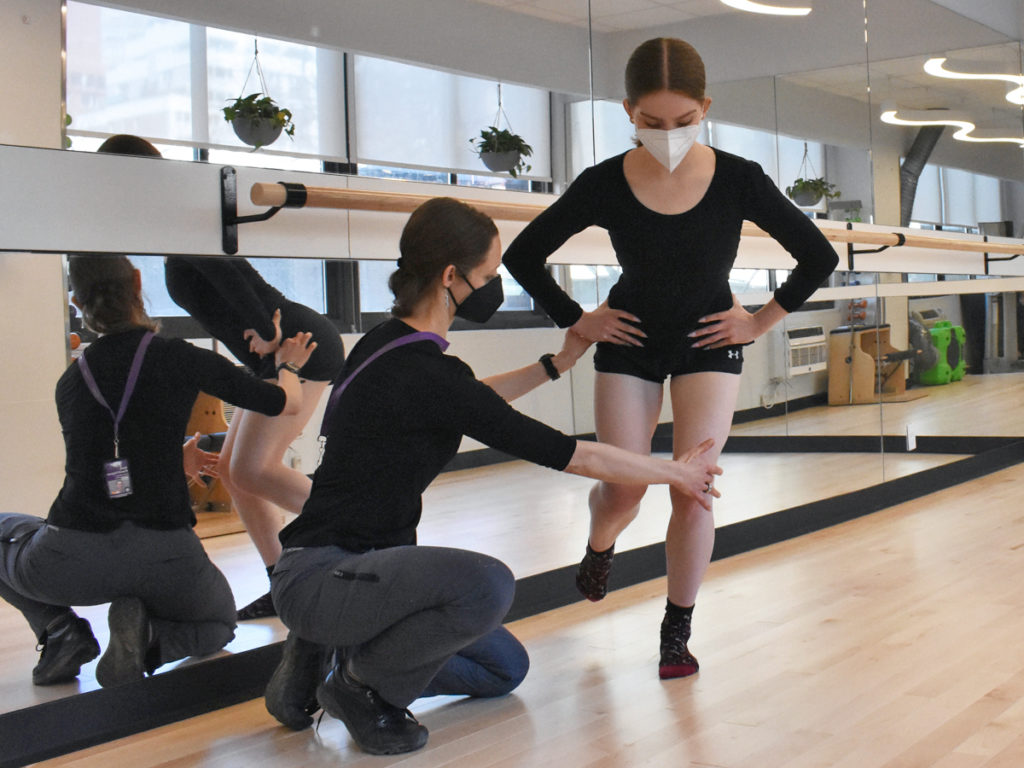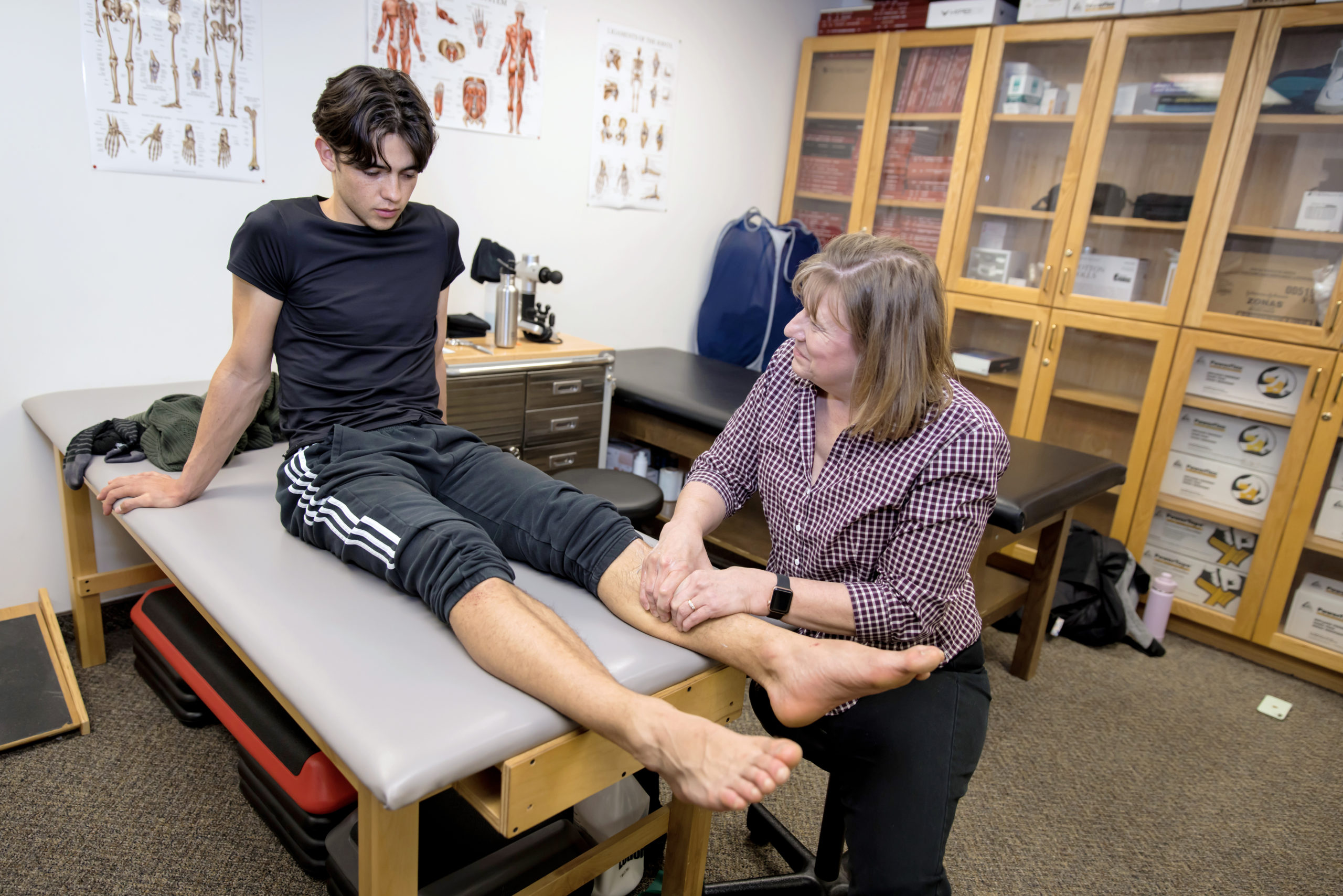How to Recognize and Treat Snapping Hip Syndrome
You’re extending your leg into the most beautiful développé à la seconde when…snap! You feel your hip pop ever so slightly. This sensation is so common in dancers that it can seem benign—but it may be the result of internal snapping hip syndrome. Although rest and activity modification may resolve the issue, if left untreated, it can become chronic, painful and limiting, so take proactive steps when it pops up.
What’s Really Going On?
Mavis Rode, a doctor of physical therapy and professor of kinesiology for dancers at Loyola Marymount University, explains that snapping hip is classified as either intra-articular (inside the hip joint), which is commonly caused by a tear of the labrum or loose pieces of bone or cartilage, or extra-articular (outside the joint), which is caused by the snapping of a tendon over a bony prominence.
There are two types of extra-articular snapping hip: internal and external. Internal snapping hip is the primary focus of this article because it’s the most prevalent type among dancers; it is often audible as a snap or pop. In contrast, external snapping hip occurs when the IT band or gluteus maximus muscle snaps over the greater trochanter on the side of the hip; there may be no audible sound, and you may only feel it.
Causes and Risk Factors
Internal snapping hip often stems from a muscle imbalance linked with repetitive hip flexion from lifting the leg to the front, says Sarah Plumer-Holzman, a physical therapist at NYU Langone’s Harkness Center for Dance Injuries. When movements like frequent battements devant, or floorwork that entails seated balances with the legs extended, are incorporated without a gradual progression, they can lead to a tight, overworked iliopsoas.
And according to University of Utah physical therapist Trina Bellendir, insufficient or incorrect use of abdominal strength and motor control is a common precursor—it increases lower back crunching, which leads to inappropriate use of the hip flexors, specifically the iliopsoas.
Getting the Right Diagnosis
Any movement—including the lowering portion of a grand battement devant or the extension portion of a développé à la seconde—that causes a snap you hear or feel can be an indication that you may be developing snapping hip, says Rode, especially if it’s painful or limiting. But because snapping hip has so many potential causes and manifestations, it’s important to resist the temptation to diagnose yourself. “Anytime you have a popping in the front that is painful, it needs to be checked out,” says Bellendir. “It will get worse if it goes untreated.” Taking note of your symptoms will help your doctor or physical therapist pinpoint the source and devise an effective treatment plan.
Prevention and Treatment
“If you’re at the point of being inflamed and aggravated and in pain all the time, it needs rest,” Plumer-Holzman says. Work with your teacher or trainer to adjust your dancing and improve your alignment before the symptoms become chronic (though frequent pain requires an assessment from an orthopedist). If this doesn’t work, she recommends resting for a week and trying a series of exercises with a neutral spine, including bridges, pliés and squats. Focus on relaxing the overworked hip flexors and utilizing the muscles at the back of the hips. Bellendir adds that during recovery from internal snapping hip in particular, dancers should focus on technique more than range of motion, including scaling back turnout and extensions. “No hip flexion past 70 degrees, and pull your turnout back about 75 percent, or to a point where it’s less painful,” she advises.
Exercises for Snapping Hip Syndrome
Physical therapist Sarah Plumer-Holzman, seen below working with a dancer at NYU Langone’s Harkness Center for Dance Injuries, recommends these exercises for preventing and treating internal snapping hip.
1. This stretch isolates the iliopsoas muscle without irritating the front of the hip joint. Position the pelvis over the knee and tuck the tail under to modify intensity, rather than leaning forward into a long lunge. Hold for 30 seconds.
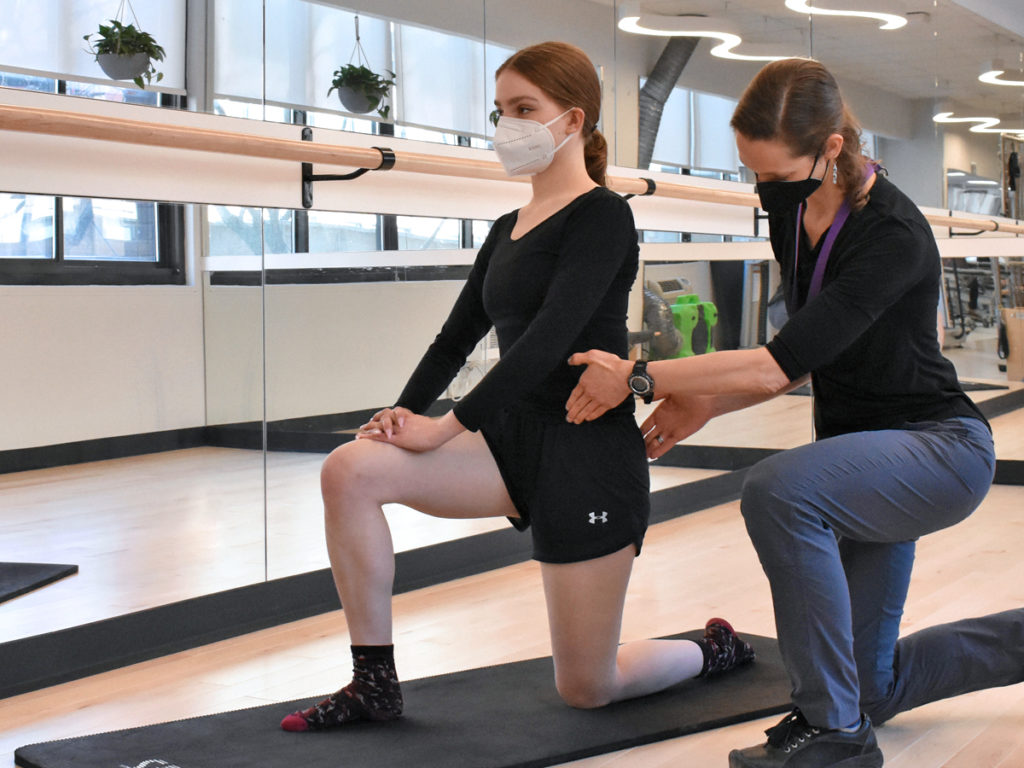
2. The bridge position—done with a neutral spine and pelvis—dynamically stretches the iliopsoas, TFL and other hip flexors. It also strengthens the glutes, which will help relax the hip flexors.
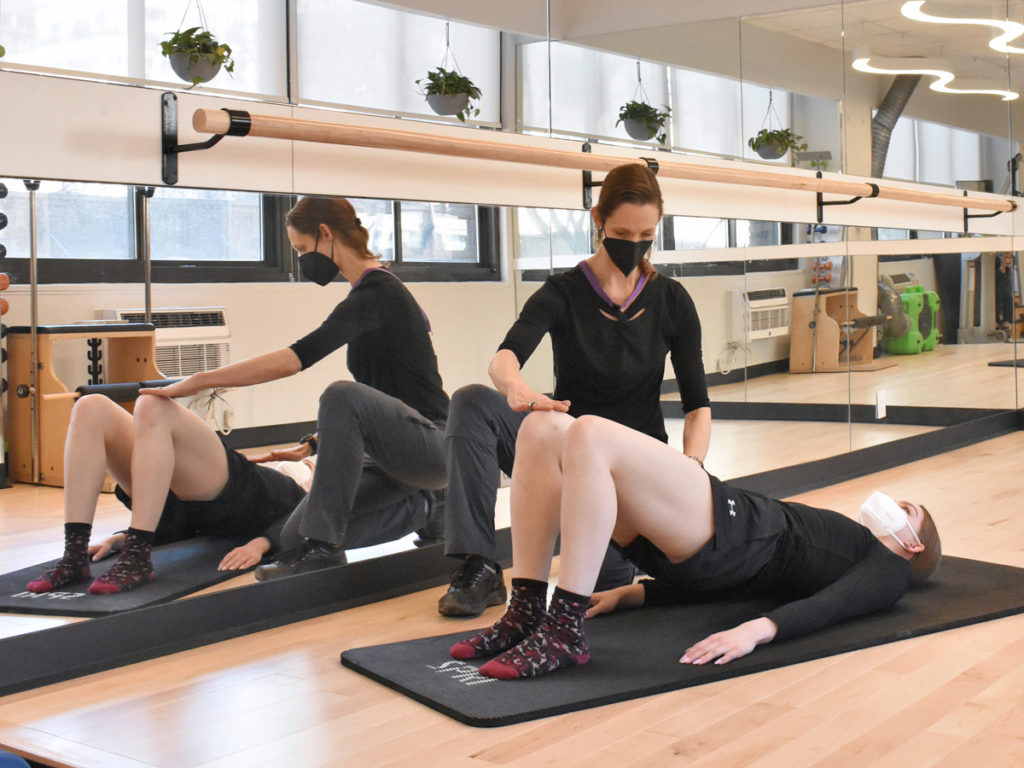
3. In a single-leg bridge position, maintain the same pelvic positioning as you would with both feet on the floor. This is an excellent position for building the pelvic stability required for balancing on one leg.
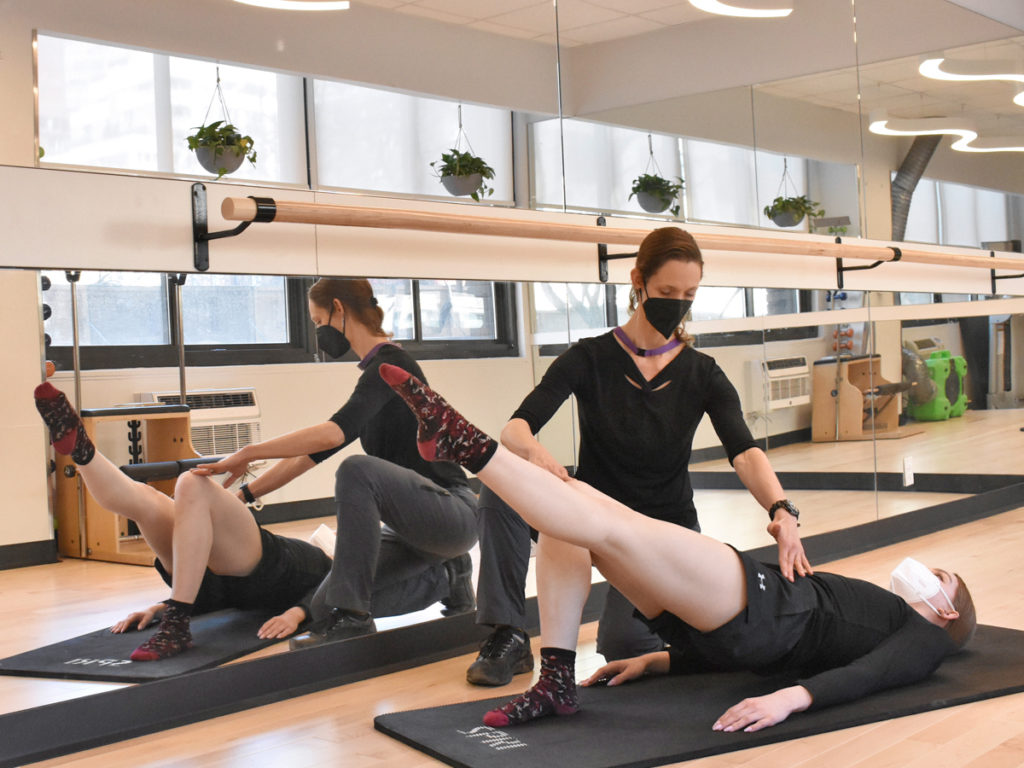
4. To counter psoas overuse, practice doing squats while relaxing the front of the hip completely, relying on the glutes to control the movement. A single-leg version, as demonstrated here, also targets pelvic stability. Avoid sinking into the standing hip.
